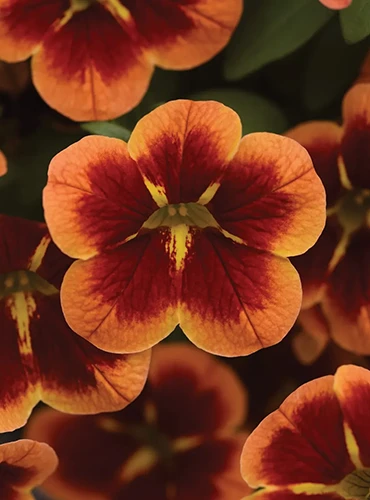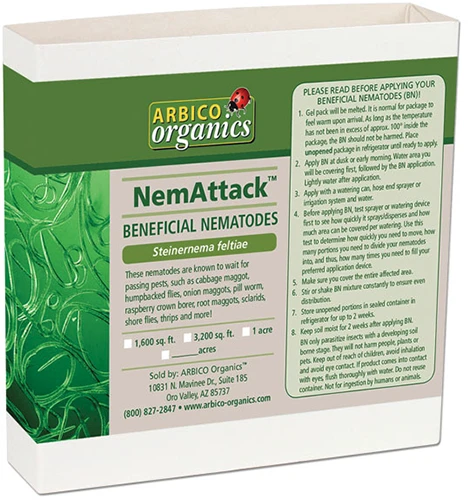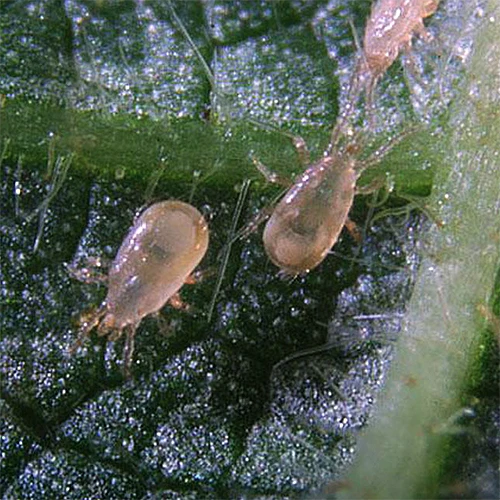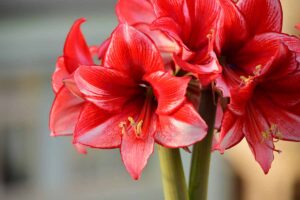Calibrachoa spp.
One of my favorite plants for filling a gap in the garden is calibrachoa.
These are small and colorful and feisty enough to muscle in amongst bigger plants. They are also popular with pollinators such as butterflies and hummingbirds, which is a big plus in my book!

We link to vendors to help you find relevant products. If you buy from one of our links, we may earn a commission.
I love adding color to my garden, but plants like petunias are a bit too much for me with their huge, gaudy flowers. Calibrachoa does pretty much the same job, but with – I think – a little more finesse.
What I love most about calibrachoas is their trailing habit. You can put them into the edge of a container, and they will spill over the side.
Or, you can put them under taller plants and they will sprawl out, covering the ground with lots of little flowers. This helps to keep weeds under control while looking super cute.
While calibrachoas are easy to grow, you must ensure the conditions are right for them. Here is a simple guide on how to get the best out of these fun little plants.
What You’ll Learn
What Is Calibrachoa?
Calibrachoas are also known as Million Bells® or Super Bells®. These are their trademarked names in the horticultural industry. “Million bells” is also often seen in common usage.
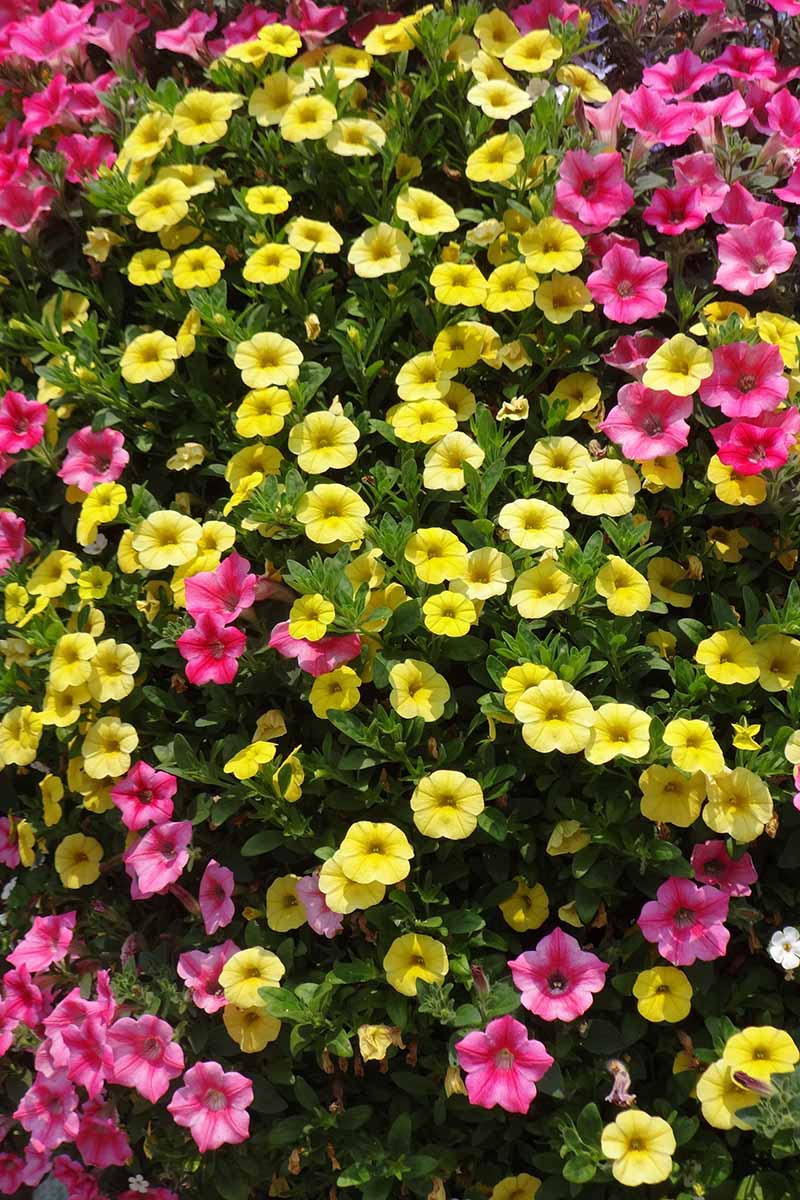
They resemble mini petunias and, like their larger counterparts, originate from Brazil. They’re members of the Solanum family, or the nightshades, the same family as tomatoes and peppers.
Million bells have small, funnel-shaped flowers that are around half an inch across. The leaves are small, oval-shaped, and sticky, like petunia leaves.

Calibrachoa has a trailing habit and is often referred to as a “spiller” for its ability to spill over the side of a container or raised bed. It’s a superb addition to pots and hanging baskets and best enjoyed when allowed to trail.
Although calibrachoa is a short-lived perennial in warm climates such as those of USDA Zones 9 to 11, these plants are grown as annuals in most other places. Unfortunately, they are not cold-tolerant, so they usually need to be discarded at the end of the season.
Cultivation and History
Unlike most garden flowers that have been around for centuries, calibrachoas have only been on the market since the late 1980s.
But they have been a smash hit ever since, with their popularity soaring since Million Bells® was first sold under the official trademark in the early 1990s.
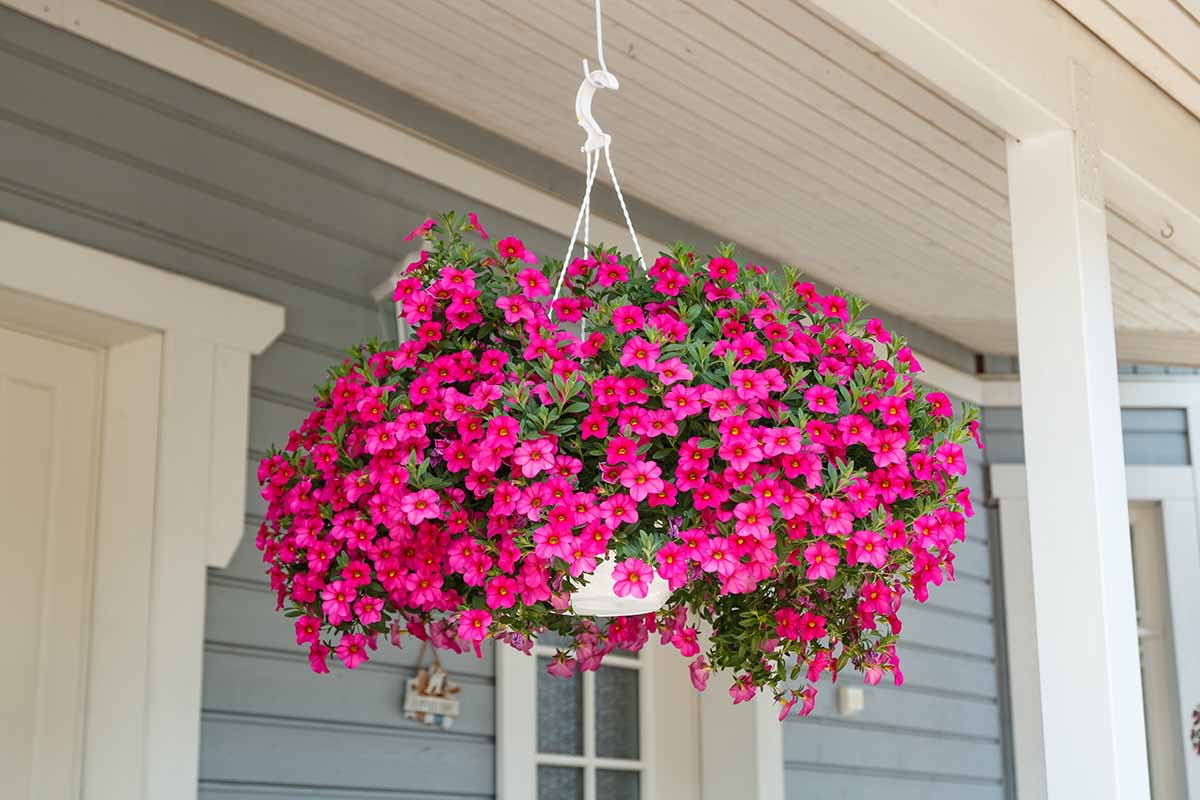
In the wild, calibrachoa grows on rocky scree and the edges of cliffs. This means these plants prefer well-drained soil.
And while they have been selectively bred to cope with a much broader range of conditions, they will still struggle in particularly alkaline garden soils.
Petunias and calibrachoas were once classified under the same genus, Petunia. Now considered part of a separate genus known as Calibrachoa, there are around 28 species in the wild.
The cultivated varieties have a much more comprehensive range of colors than petunias and are capable of producing more color combinations as well. Some varieties have double blooms, and compact cultivars are also available.
Calibrachoa Plant Propagation
Calibrachoa is easy to grow, relatively drought tolerant, and can be purchased at most garden centers from spring onwards.
The most cost-effective way to buy them is as small plugs which can be raised in small pots in the greenhouse until the risk of frost has passed.
They are also easy to propagate yourself from seed or cuttings.
From Seed
Hybrid varieties of calibrachoa won’t grow true from seed; you must buy them as small plants or take cuttings.
Also, because Million Bells® is a trademarked plant, you’re not allowed to propagate it. However, true species plants can be grown from seed.
Sow in early spring or in fall in containers placed in a warm greenhouse or on a sunny windowsill. You will need to protect seedlings from frost.
Fill a small pot or tray with seed-starting mix and sprinkle your seeds on the surface. Cover lightly with vermiculite; this will help the seeds retain moisture and get some light.
Water well and let the excess water drain away so the soil doesn’t get waterlogged.
The seeds take between 10 and 14 days to germinate. They will need to be in a sunny spot and kept moist to ensure healthy seedling growth.
Once they have one set of seed leaves and a set of true leaves, they are ready to pot up as described below.
Grow them inside until the risk of frost has passed before hardening off to transplant outdoors.
From Cuttings
Taking cuttings from calibrachoa is easy; the only difficulty is selecting the right piece to cut.
As the name “million bells” suggests, calibrachoa produces many flowers. To take a cutting, you need to find a piece with no flowers so that it can put energy into rooting instead of blooming.
This is best done in early spring. Take a cutting about six inches long and remove the lower leaves.
Stand the cutting in water somewhere sunny and give it some fresh water every few days. In a few weeks, roots will form, and you can pot up the cutting.
From Seedlings/Transplanting
To transplant calibrachoa seedlings, gently tease each seedling out of the soil while holding onto a leaf, not the stem. Place each seedling into its own small pot filled with potting soil.
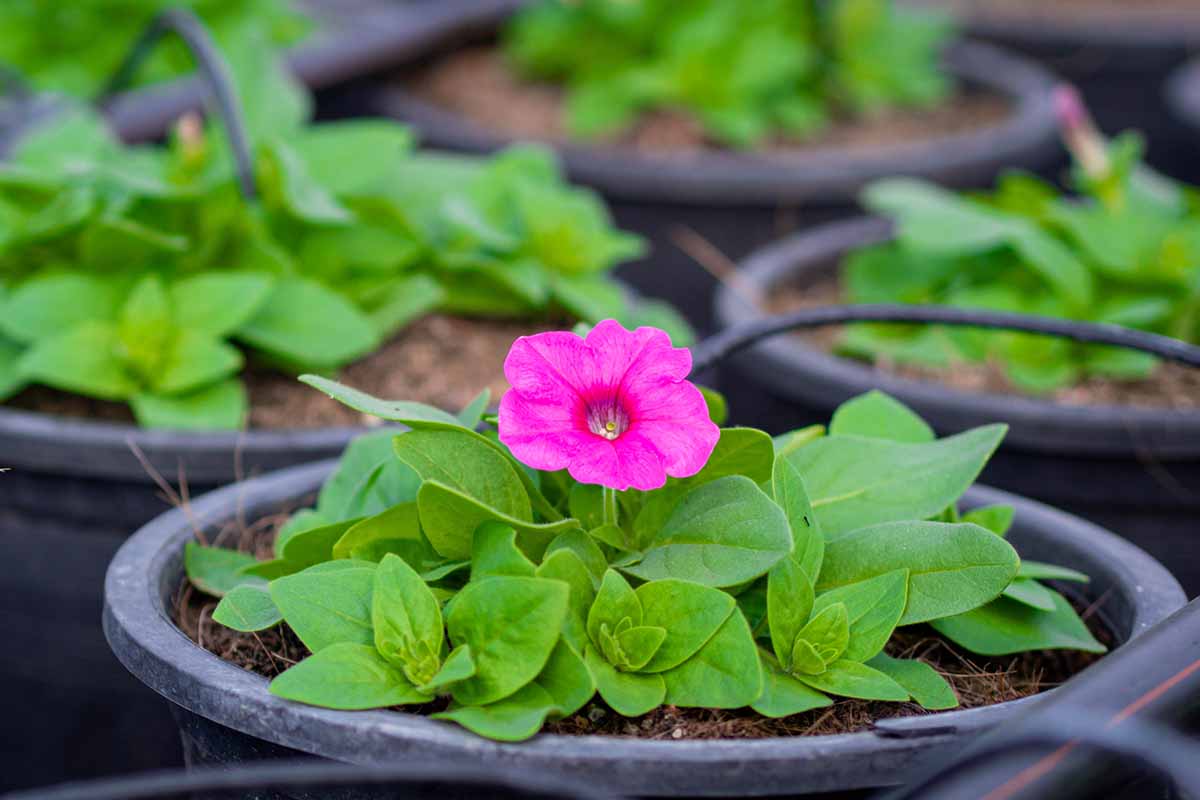
Allow seedlings to continue to grow until they are a few inches tall, with several sets of leaves, and then transplant them into their final location in the garden.
It’s best to harden off plants that have been grown indoors for a period of about a week, to give them time to adjust to outdoor conditions. This isn’t necessary for outdoor nursery-grown plugs.
Simply choose a protected location out of direct sun and place the plants there for about half an hour before bringing them back inside.
Add 30 minutes to an hour each day, moving into gradually brighter conditions as well, until they can withstand the environment where you wish to plant them permanently.
Be sure to cover transplanted roots with free-draining soil without covering the crown. Water in well.
How to Grow Million Bell Flowers
Million bells are fast-growing and easy to establish in the right conditions. Once these requirements are met, you can enjoy months of pretty flowers and low-maintenance joy.
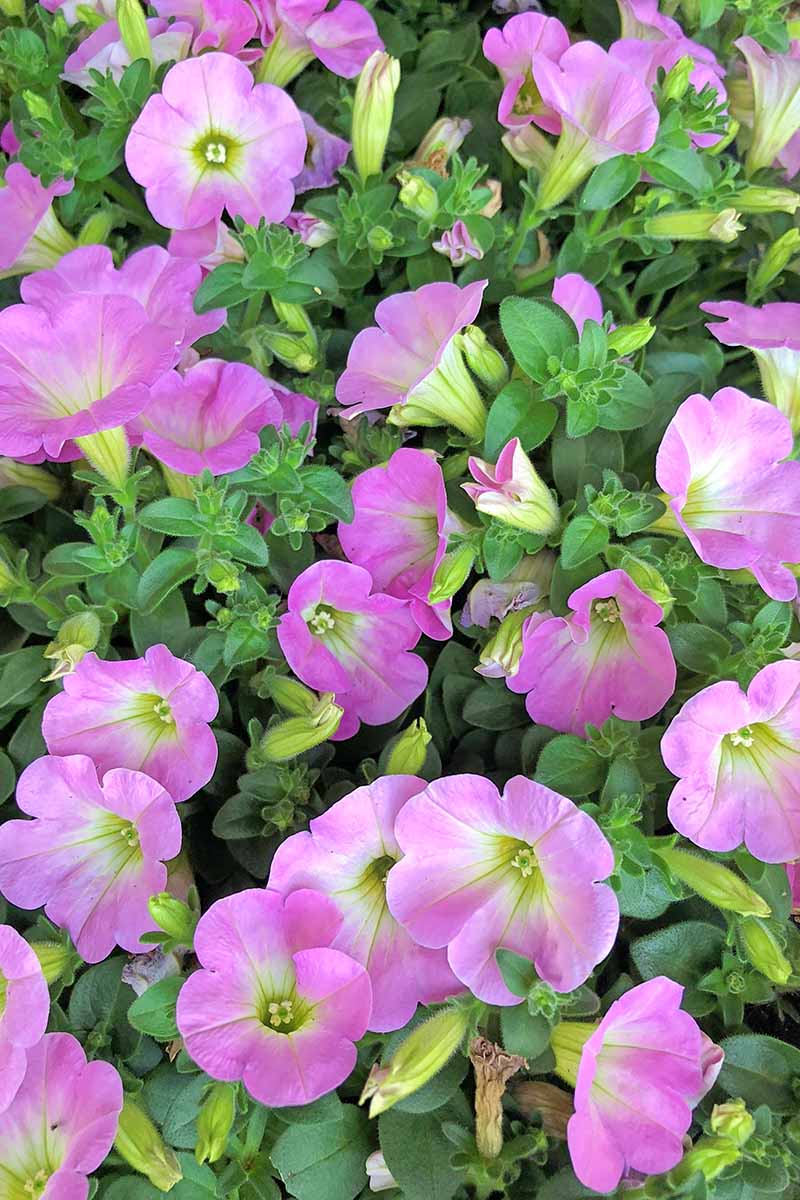
The general rule is that calibrachoa enjoys well-drained soils and full sunshine. Since I like playing fast and loose with rules in my garden, however, it’s my experience that they will grow almost anywhere.
Of course, they will grow more vigorously in conditions better suited to their preferences. But they won’t complain too much about being in rich, moist soil in partial shade.
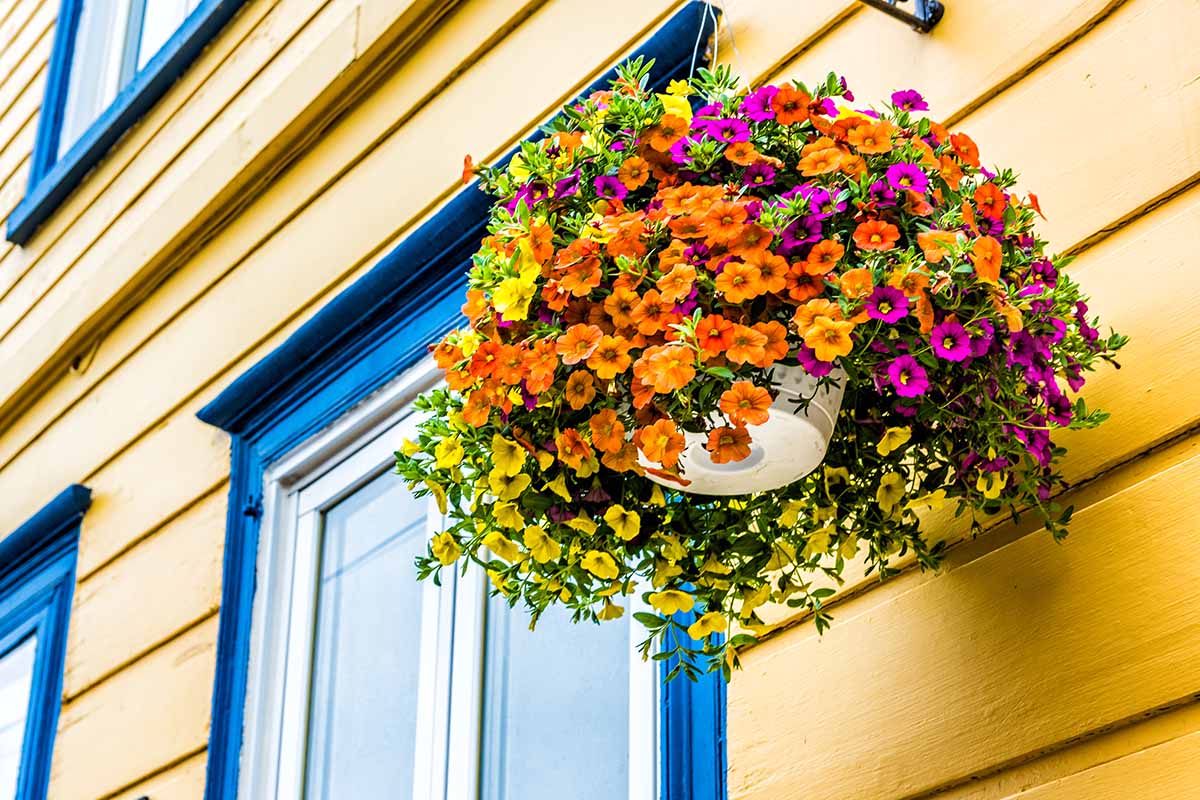
Growing calibrachoa in pots with drainage holes or hanging planters is a great idea, as it can be easier to ensure the potting mix doesn’t get waterlogged.
In addition, you can add some horticultural grit to your potting mix to improve drainage.
Your calibrachoas will like moist but well-drained soils, so water regularly and provide more during hot weather.
Remember where million bells plants grow in the wild. Okay, you can’t be expected to recreate a South American cliff face in your garden (unless you already have one!), but you can create similar conditions. A spot with plenty of sunshine and good drainage is perfect.
Calibrachoa thrives in slightly acidic soils, so you may wish to mix standard potting soil with ericaceous compost.
Or, try this natural and organic potting soil blend for acid-loving plants from Coast of Maine.

Made of compost, peat moss, aged bark, and lime, it’s easy to work into standard potting mix or your native soil. Find 20-quart bags now on Amazon.
Providing that they will still get plenty of sunshine, calibrachoas can be grown under taller plants or on the edge of pots or beds.
Unfortunately, at the end of the season they will be killed by frosts, so you will need to propagate again for next year in most USDA Hardiness Zones.
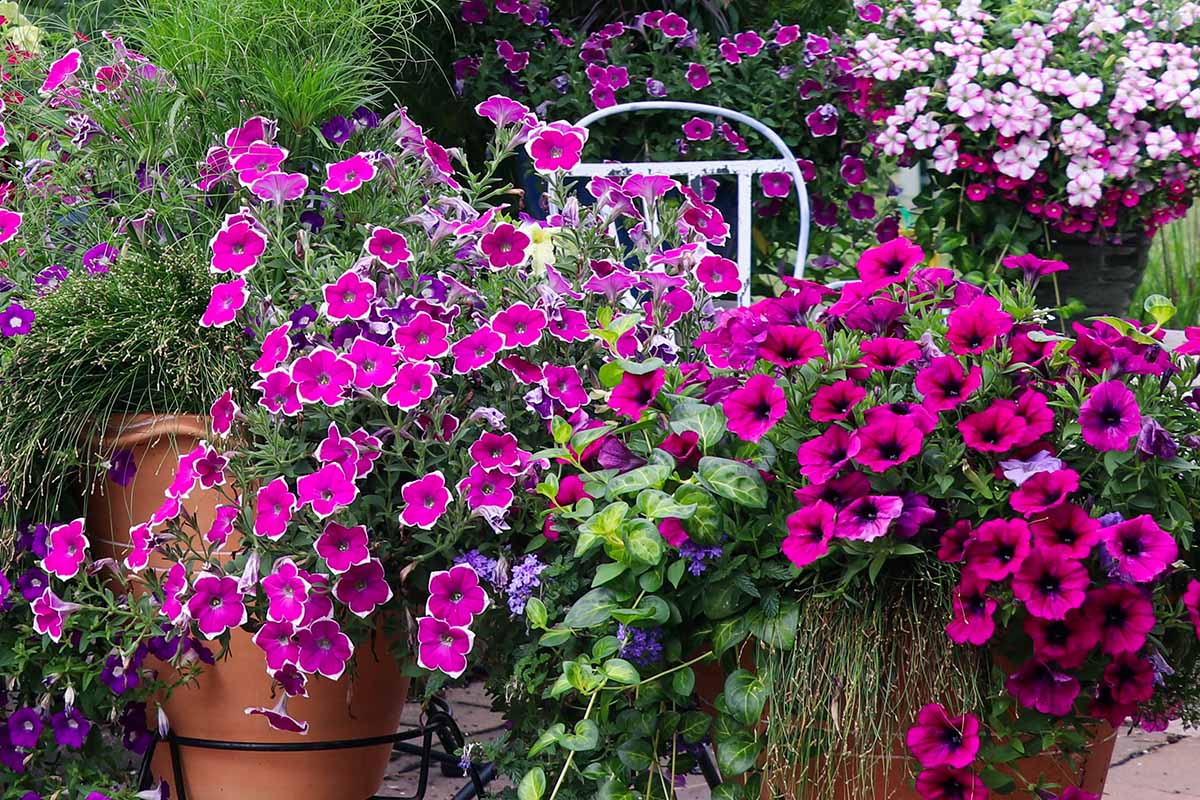
Frequent watering causes soil to leach nutrients, so be sure to fertilize regularly with a balanced product for acid-loving plants, applied according to package directions.
Growing Tips
- Grow in full sun or partial shade.
- Calibrachoa grows best in well-drained soils.
- Grow in pots if your soil doesn’t have good drainage.
Pruning and Maintenance
You can deadhead calibrachoas if you want, but they don’t need to be deadheaded to keep the blooms coming – these are considered “self-cleaning.”
They may need to be chopped back towards the end of the summer if they are getting unruly or looking a little ragged.
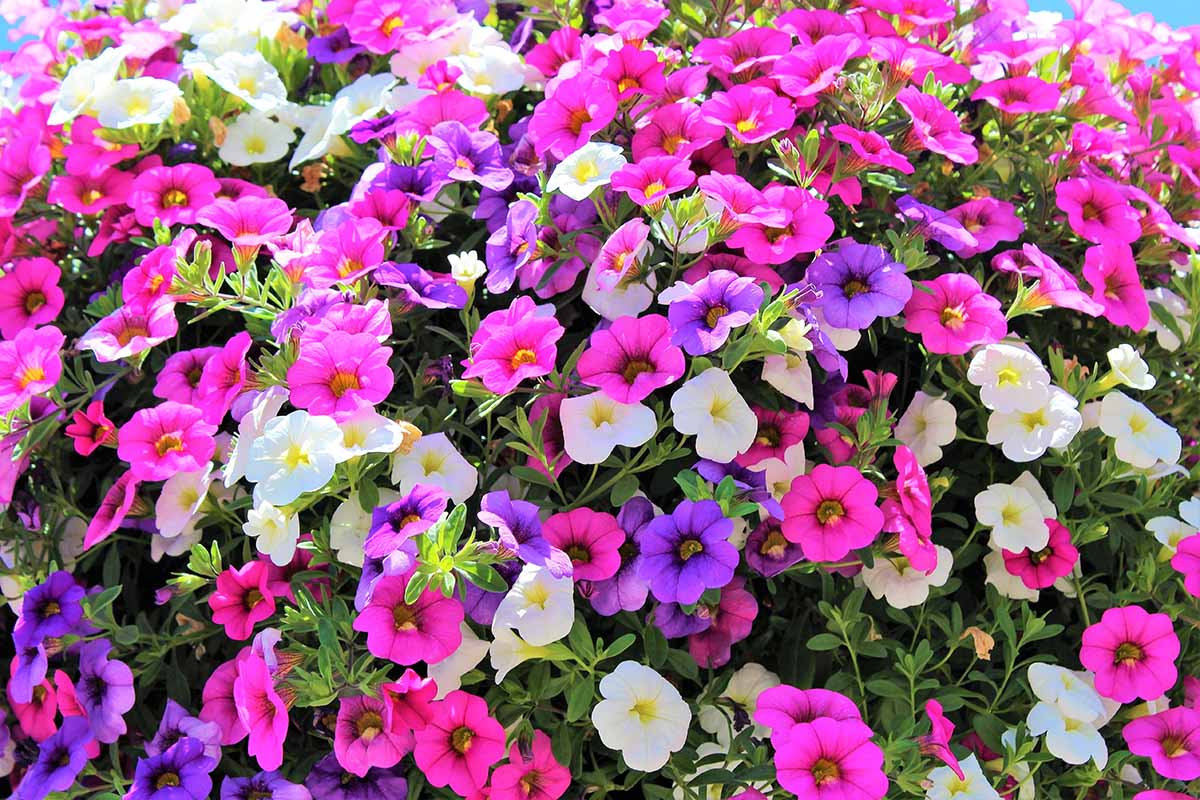
You can cut them back hard, and they will recover. Leave some foliage on the plant to help it bounce back quicker. The plants will need to be cleared away after they have been killed by frost, and replanted next year.
If you grow your calibrachoa from seed, you can collect seeds for planting the following year.
Be sure to follow any regulations regarding patented varieties, and remember that hybrids with fertile seed may produce surprising results.
Allow the flowers to die back and the seed pods to develop. Once the pod has dried fully, you can take the seeds out easily.
If the seeds are white, they are not ready to harvest yet. Wait until the seeds have turned dark brown or black. Store them in a cool, dry place for next year.
Calibrachoa Cultivars to Select
There are so many varieties of calibrachoa that it’s difficult to pick favorites here.

However, they all grow in similar conditions, so you won’t have to choose a variety to suit your environment but rather to fit your color scheme.
So many lovely hybrid options are available under the brand name Superbells® from Proven Winners.
My favorite is ‘Coral Sun,’ as it goes with almost everything. It’s a salmon pink variety with a yellow center and it pairs well with light foliage plants and orange or pink color schemes.
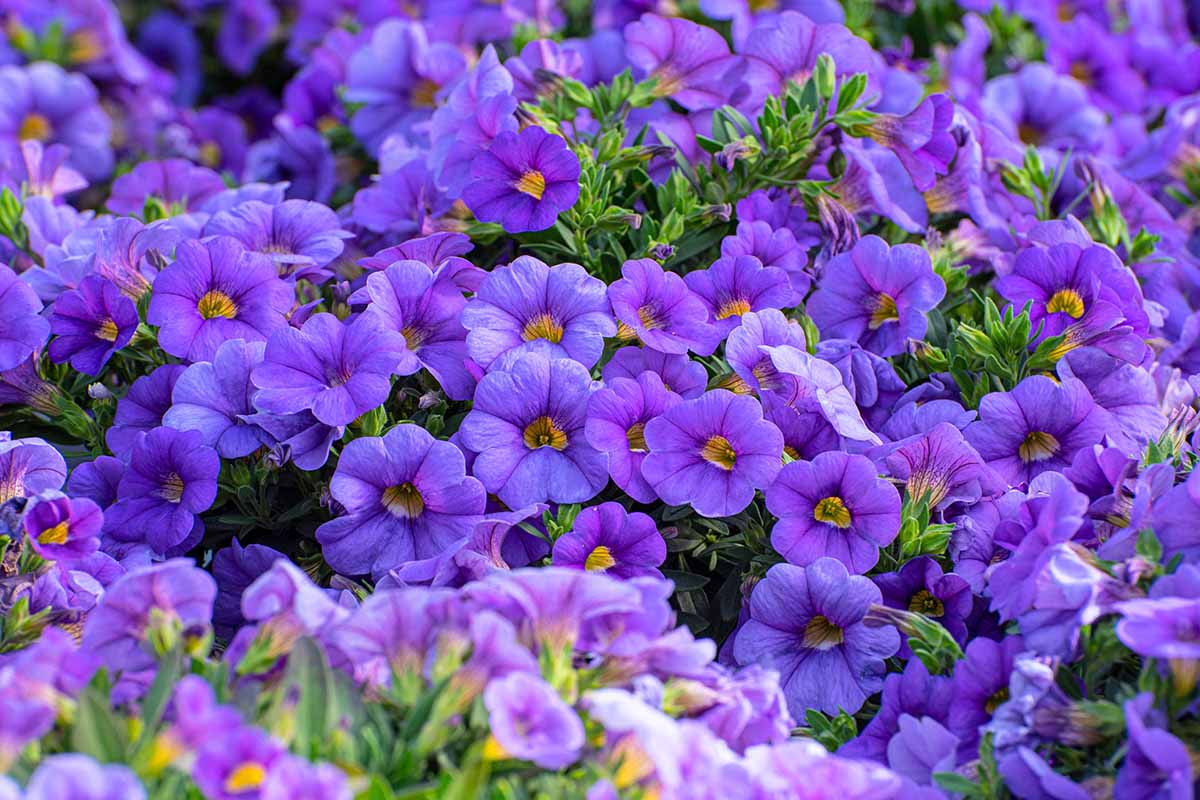
Superbells® ‘Blue’ is a deep purple variety with a yellow center and it can add a little drama to your containers. It’s certainly an eye-catching color.
Superbells® ‘Tropical Sunrise’ has yellow and red striped flowers that are beautiful and interesting. This cultivar will do well as a stand-alone plant or it can be paired with other flowers that help accentuate its colors.
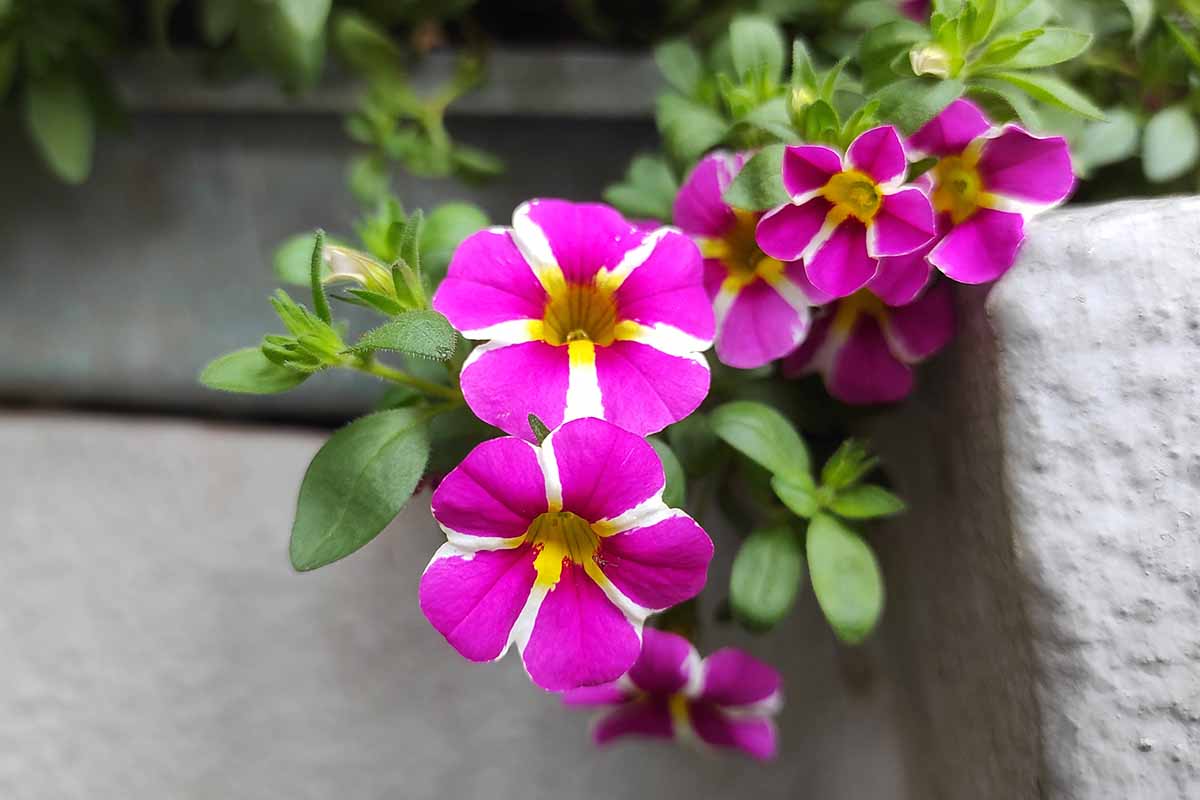
Superbells® Rising Star™ is an excellent choice for a big hit of color and interest. It is bright pink with a yellow star-shaped pattern across the petals.
Also from Proven Winners, Million Bells® ‘Trailing Blue’ is a beautiful pale purple cultivar with a yellow center. It pairs well with many plants and stands out well on its own too.
Bumble Bee is another lovely series. I’m partial to the ‘Orange’ cultivar, with tangerine-orange blossoms surrounding deep red centers.
Bundles of four plants are available from Burpee.
Managing Pests and Disease
These plants aren’t particularly prone to problems as long as the environment is to their liking.
Keep up the good work in terms of garden sanitation and maintenance, and keep your eyes peeled for the following:
Insects
Like petunias, the main pests that affect calibrachoa are thrips and aphids.
Sucking sap from leaves and stems, they rarely do much damage, but it can be unsightly. However, they can also transmit diseases to our plants, resulting in far more significant damage.
Tobacco budworms may also be a problem as they feed on the buds and petals of calibrachoa.
Aphids
Aphids are sap suckers, like thrips but larger. They can gather in very large numbers and prefer sucking sap from stems, which causes more significant damage to the plant than leaf damage.
Calibrachoa can usually cope with aphid infestations, however, providing the numbers aren’t too high.
Aphids secrete a sticky substance called honeydew; this is just excess sugar from the sap. However, this honeydew can bring black sooty mold.
Aphids can be washed off plants with a strong jet of water. You will need to check your plants regularly to keep the populations under control.
Sticky traps and biological controls can also be used if numbers are too high. Many options are available from Arbico Organics.
Learn more about how to manage aphids in our guide.
Thrips
Thrips are small, thin, pale insects roughly the size of the end of a sewing needle. They feed on sap and are often found on calibrachoa.
You will need to keep checking your plants for them throughout the season. However, they are relatively easy to wash off with a rinse from the garden hose.
If thrips are a big problem in your garden, you may want to do more to attract beneficial insects such as ladybugs, minute pirate bugs, and lacewings.
If you have a serious thrips problem, you may want to invest in some biological control options in the form of beneficial nematodes or predatory mites.
NemAttack Beneficial Nematodes
NemAttack Steinernema feltiae (Sf) beneficial nematodes are available in various package sizes from Arbico Organics.
And Arbico Organics has Amblyseius cucumeris mites available as well.
Tobacco Budworms
The tobacco budworm (Heliothis virescens) is a moth caterpillar that can be a serious pest for gardeners.
These insects will hollow out the buds of your calibrachoa and leave behind feces and molted skins.
The best defense is a garden filled with plenty of natural predators, so encouraging biodiversity will help control numbers.
Spinosad or Bacillus thuringiensis (Bt) treatments may be effective against these pests.
Disease and Physiological Conditions
Mostly disease free, there are a few potential ailments to be on the lookout for when growing these plants.
Black Rot
More commonly known as black rot but sometimes referred to as Thielaviopsis root and stem rot, this disease causes plant growth to be stunted, eventually causing plants to die.
Thielaviopsis basicola fungi which cause the disease thrive in moist, alkaline soils. For prevention, ensure that the soil is well-draining and try to keep the pH slightly acidic to neutral.
Common in the greenhouse industry, always check plugs for signs of good health before bringing them home from the nursery.
If you spot signs of black rot early, you may wish to take some cuttings from parts that are not yet affected and propagate new plants, discarding the rest.
Be careful to sanitize containers and use fresh growing medium, as the black rot fungi will stay in the soil.
Interveinal Chlorosis
Not really a disease, interveinal chlorosis is a physiological condition caused by an iron deficiency. It will cause the leaves to turn pale yellow, but the veins will remain green.
Usually, calibrachoa is affected by this when the pH of the soil is too high. The iron is no longer available to these plants if the pH is above 6.2.
Most fertilizers do not contain as much iron as calibrachoa needs, so consider an application of iron chelates to provide extra iron to your plants.
Begin by testing the soil’s pH; if it is too high, you can apply sulfur to help to bring it down a little.
But note that sulfur needs some time to have an effect, so it’s best to use soil that is naturally acidic to start with.
Best Uses for Million Bell Flowers
Calibrachoas are beautiful plants that grow well in containers, hanging baskets, and on the edges of raised beds.

The range of colors available and their tolerance for various conditions makes them versatile in the garden.
They are also popular with butterflies and hummingbirds, helping to bring wildlife into your garden.
Quick Reference Growing Guide
| Plant Type: | Tender, short-lived perennial (mostly grown as an annual) | Flower / Foliage Color: | All colors except true blue/mid-green |
| Native to: | South America | Tolerance: | Acidic soil, heat |
| Hardiness (USDA Zone): | 9-11 | Maintenance: | Low |
| Bloom Time/Season: | Spring-fall | Soil Type: | Rich, loamy |
| Exposure: | Full sun-part shade | Soil pH: | 5.5-6.0 |
| Time to Maturity: | 3 months | Soil Drainage: | Well-draining |
| Spacing: | 6-12 inches | Attracts: | Butterflies, hummingbirds |
| Planting Depth: | Surface sow (seed), same depth as root ball (transplants) | Companion Planting: | Coleus, geraniums, nemesia, verbena |
| Height: | 6-12 inches | Uses: | Containers, hanging baskets, window boxes |
| Spread: | 12-18 inches | Order: | Solanales |
| Growth Rate: | Fast | Family: | Solanaceae |
| Water Needs: | Moderate-high | Genus: | Calibrachoa |
| Common Pests and Diseases: | Aphids, thrips, tobacco budworms; black rot, interveinal chlorosis | Species: | Hybrids |
Celebrating Calibrachoa
By now, I probably don’t need to tell you how fabulous these hard-working little plants are.
They’re easy to grow, colorful, versatile, and super cute. If you’re a fan of lots of color and flowers like I am, these are the plants for you!
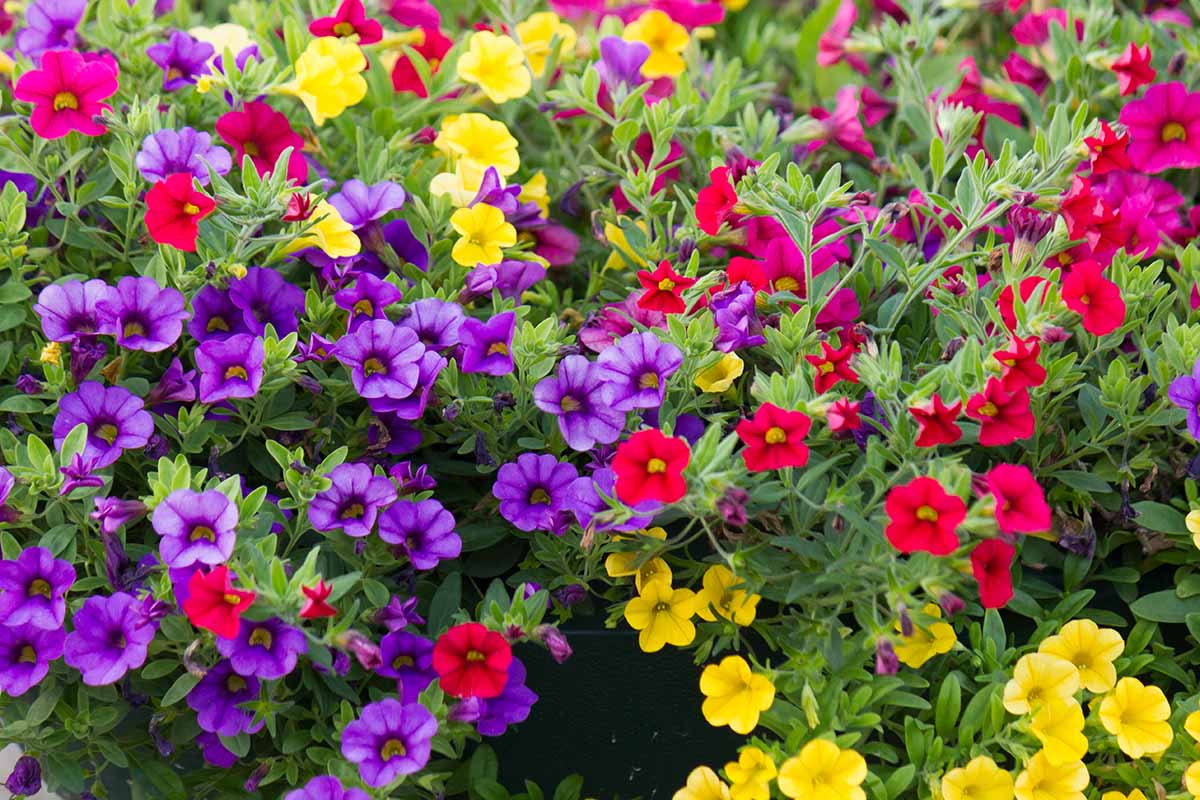
There are so many fantastic varieties of calibrachoa that I’ve yet to try in my garden. I would love to hear about your favorites in the comments below.
And for more information about growing flowers in your garden, have a read of these guides next:
